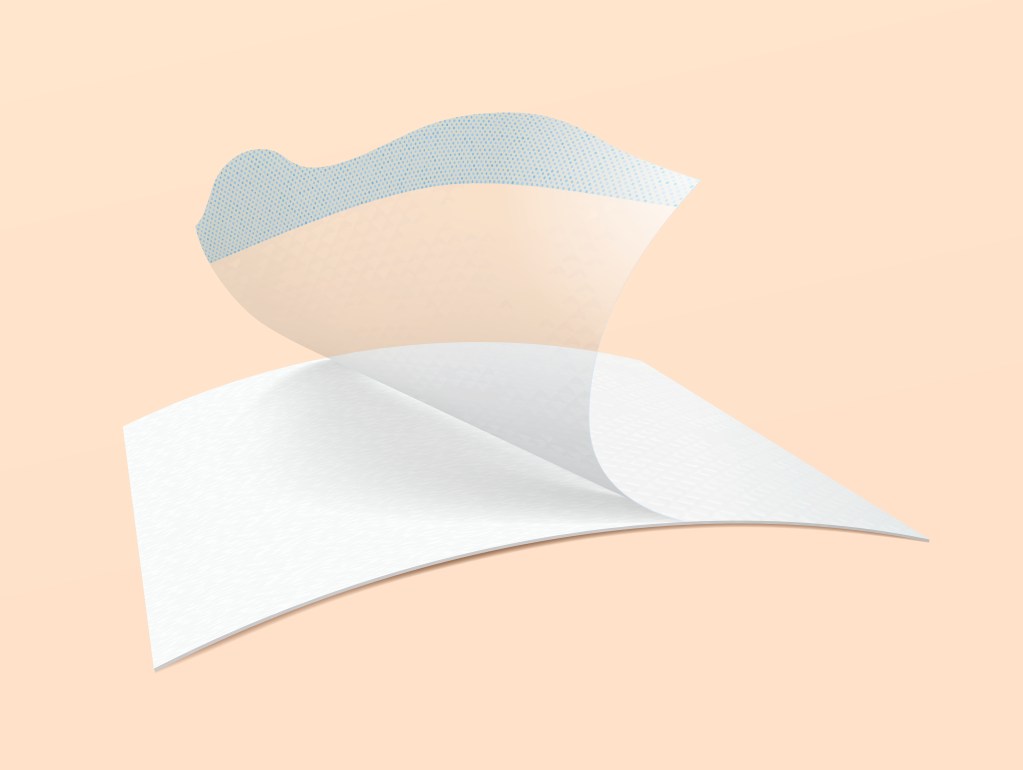What if killing cancer didn’t mean burning it, poisoning it, or cutting it out—but shaking it apart from the inside?
That’s exactly what a group of scientists has figured out how to do. Using dye molecules already found in medical imaging tools, researchers have developed a way to make cancer cells vibrate themselves to death—literally. When exposed to near-infrared light, these molecules start oscillating so rapidly they rupture the membranes of cancer cells like microscopic jackhammers. No chemicals, no heat, no incisions.
The results are hard to ignore: in lab tests, this approach destroyed 99% of cancer cells. In animal studies, half the treated mice became cancer-free. And because the technique relies on mechanical force—not biochemical interaction—cancer cells can’t simply mutate their way around it.
This isn’t a minor tweak to existing therapies. It’s a new category of treatment—one that could change how we approach cancer altogether. Here’s how it works, why it matters, and what might come next.
A New Way to Destroy Cancer Cells
Most cancer treatments rely on overwhelming the disease with toxic chemicals, radiation, or surgery. These approaches work, but they come at a cost—collateral damage to healthy tissue, grueling side effects, and limited success with certain hard-to-reach or resistant tumors.
This new method takes a completely different route. Instead of relying on chemical reactions or high temperatures, it uses mechanical force at the molecular level. The central players are aminocyanine molecules, synthetic dyes already approved and widely used in medical imaging. Researchers at Rice University discovered that when these molecules are exposed to near-infrared (NIR) light, they begin to vibrate in a tightly coordinated motion. These aren’t random movements—this is synchronized, high-frequency shaking that exerts real physical force.
The team refers to them as “molecular jackhammers.” Once attached to the surface of a cancer cell, these molecules oscillate so powerfully they rupture the cell membrane. The cancer cell is physically torn apart from the outside in without the need for drugs, radiation, or heat.
This mechanism works through a phenomenon known as a molecular plasmon, a coordinated vibration of electrons that spreads across the molecule. While plasmons are more commonly associated with nanoparticles, this is the first time researchers have demonstrated plasmonic behavior in small organic dye molecules used for a therapeutic purpose.
One part of the molecule helps it anchor to the fatty membrane of the cancer cell. The other part—activated by NIR light starts vibrating at a rate millions of times per second. This mechanical motion is fast, forceful, and, most importantly, lethal to cancer cells.
The key advantage here is selectivity. Aminocyanine molecules naturally bind more easily to cancer cells than to healthy ones. And because the jackhammer effect only occurs when the molecules are triggered by NIR light, doctors could theoretically target specific tumor sites with high precision—leaving healthy tissue largely untouched.
The Science Behind Molecular Jackhammers

At first glance, the idea that a vibrating molecule could kill a cancer cell sounds like something out of science fiction. But at the molecular level, it’s grounded in precise physics—and the simplicity of the mechanism is part of what makes it so powerful.
The core of this breakthrough lies in aminocyanine molecules, a type of fluorescent dye that’s already in clinical use for imaging tumors. These molecules are biocompatible, water-stable, and naturally attracted to the outer membranes of cells especially cancer cells, which often have more disordered and accessible membranes than healthy ones.
What researchers discovered is that when these molecules are exposed to near-infrared (NIR) light, they start to vibrate in perfect synchrony. This synchronized motion is driven by a phenomenon called a molecular plasmon, a coordinated oscillation of electrons that spreads across the molecule. Think of it like a group of electrons pulsing together in rhythm, creating a mechanical wave that shakes the entire structure.
This isn’t heat-based energy like in photothermal therapy, nor is it about generating reactive molecules like in photodynamic therapy. It’s pure mechanical motion, and it’s fast. These molecular jackhammers vibrate millions of times per second, generating enough physical force to rupture the lipid bilayer of a cancer cell’s membrane.
The molecule itself is cleverly designed for this job. One end serves as a kind of “grip,” attaching firmly to the cancer cell’s outer layer. The rest of the molecule does the vibrating. Once the motion starts, the molecule delivers a series of microscopic blows, essentially punching holes into the cell membrane until the cell can’t hold together any longer.
Because this process targets the physical structure of the cancer cell, not its internal chemistry, there’s no conventional pathway for the cell to resist. Unlike chemotherapy drugs, which cancer cells can learn to eject or metabolize, this approach doesn’t offer them time to adapt. As soon as the vibration is triggered, the damage is done.
Another major advantage is depth of reach. NIR light can penetrate human tissue up to 10 centimeters deep, far beyond the half-centimeter limit of visible light. This makes it possible to treat tumors buried deep inside the body such as those in the lungs, liver, or bones—without needing to cut into the tissue.
Why This Is Different From Current Cancer Treatments

Most cancer therapies, even the most advanced ones, rely on some form of biochemical attack. Chemotherapy floods the body with toxic agents. Radiation blasts cancer cells with high-energy waves. Targeted drugs interrupt cell signaling or starve tumors of nutrients. These methods have saved millions of lives—but they all share a major downside: they affect more than just cancer cells.
The molecular jackhammer technique is fundamentally different. It doesn’t rely on poisoning cells, burning tissue, or disabling DNA. It doesn’t trigger an immune response. Instead, it uses a completely mechanical approach: molecules vibrate so forcefully that they physically rupture cancer cells from the outside in. That shift in strategy comes with several key advantages:
1. No Chemical Warfare, No Resistance
Cancer is notorious for developing resistance to drugs. Cells mutate quickly, finding ways to block or bypass the effect of therapies that once worked. But the jackhammer method doesn’t give cancer cells that opportunity. There’s nothing to block no enzyme to target, no gene to suppress. The molecule binds to the cell, vibrates, and the cell membrane breaks apart. It’s not a signal the cell can intercept or adapt to. As Dr. James Tour put it, “Only if a cell could prevent a scalpel from cutting it in half could it stop this.”
2. Precision Without Collateral Damage
Traditional treatments often damage healthy cells in the process. This is what leads to common side effects like fatigue, nausea, and immune suppression. The molecular jackhammer, however, uses aminocyanine dyes that preferentially bind to cancer cells, not healthy ones. Even more importantly, the destructive vibration is only activated when near-infrared light is applied meaning the treatment can be precisely directed to the tumor site, sparing the rest of the body.
3. Deeper Reach Without Surgery
One of the most significant limitations of light-based therapies has been how far light can penetrate into the body. Visible light only reaches superficial layers about half a centimeter. That’s not enough to reach tumors inside organs or bones. But near-infrared light can go up to 10 centimeters deep, opening up non-invasive treatment options for cancers that currently require surgery or internal drug delivery.
4. Simpler, Cheaper, and Already in Use
Unlike many experimental cancer therapies that involve gene editing, custom antibodies, or lab-grown cells, the building blocks of this method are already in clinical use. Aminocyanine dyes are FDA-approved for imaging, relatively inexpensive to produce, and don’t require cold-chain storage or complex handling. This could make the technology more accessible and scalable especially important for global cancer care.
Real-World Results and Expert Insights

Breakthroughs in the lab often take years to show real promise. But in this case, early results are already impressive and researchers are cautiously optimistic about what comes next.
In lab tests on cultured human melanoma cells, the vibrating aminocyanine molecules destroyed 99% of cancer cells after activation with near-infrared light. That level of efficacy is rare, especially for a method that doesn’t involve toxic chemicals or thermal damage. The same technique was tested on mice with melanoma tumors. In that experiment, half of the treated mice became completely cancer-free. These are preclinical results, but they’re a strong signal that the concept is more than just a theoretical success.
Part of what makes this finding so significant is that it emerged from a broad, cross-disciplinary team effort. The research was led by scientists at Rice University, with collaboration from Texas A&M University, Texas State University, and MD Anderson Cancer Center. The team includes chemists, quantum physicists, engineers, and cancer specialists an unusual mix that reflects how complex the problem is and how wide the solution space needs to be.
Dr. Ciceron Ayala-Orozco, a physical chemist at Rice University and one of the lead researchers, spent years studying how molecules behave under light. His breakthrough came when he realized a simple imaging dye might do more than just help visualize cancer it could help destroy it. “I wanted to use a simple molecule, not necessarily a motor, that absorbs NIR light and could go deeper into tissue,” he explained. That insight set the foundation for the entire study.
Dr. James Tour, a senior chemist at Rice and a key figure in the research, helped describe and characterize the movement of these molecules as a plasmon-driven vibration, a kind of electron resonance that hadn’t previously been observed at this scale in organic molecules. He’s clear on how big this shift could be: “It’s a whole new modality. And when a new modality comes in, so much begins to open up.”
To understand why this matters so much, it helps to look at the technical side. The team used time-dependent density functional theory, a quantum chemistry modeling technique to analyze the way electrons and nuclei move in response to light. This helped confirm that the plasmonic effect driving the vibration was real, repeatable, and central to the molecule’s cancer-killing action. It also allowed the team to rule out other possible mechanisms like heat or chemical reactivity.
The fact that this approach works with a molecule already used in clinical settings gives it a major head start compared to entirely new drug candidates. Safety profiles are already well established. And because the mechanism doesn’t rely on altering cellular behavior, the pathway to clinical trials could be more straightforward.
What This Could Mean for the Future of Cancer Treatment

This discovery doesn’t just add another option to the cancer treatment toolbox—it could redefine the entire approach. Traditional therapies often force patients to endure months of side effects, invasive surgeries, and hospital stays. The molecular jackhammer technique offers a glimpse of a future where treatment is faster, less toxic, and far more targeted.
Because the dye molecules used are already FDA-approved for imaging, the road to clinical use may be shorter than with completely new drugs. The therapy itself is simple in concept: light activates vibration, vibration destroys cancer cells. In lab studies, this happens within minutes. In animal trials, half the treated mice were fully cleared of tumors. If these results translate to humans, we could be looking at a therapy that requires no incision, no drugs, and potentially just a focused beam of light delivered at a clinic.
There are also major practical advantages. Near-infrared light penetrates tissue deeply—up to 10 centimeters—making it possible to reach tumors in the liver, lungs, or bones without cutting through layers of healthy tissue. In deeper locations, light could be delivered through minimally invasive probes, similar to those already used in endoscopy. Treatments could be quick, localized, and outpatient-based—drastically reducing burden on both patients and health systems.
Because the mechanism is mechanical rather than chemical, the treatment bypasses one of the biggest challenges in oncology: drug resistance. Cancer cells that evolve to dodge chemotherapy or targeted drugs won’t have the tools to defend against being physically ruptured. And since healthy cells aren’t targeted the same way, side effects may be minimal.
That said, real challenges remain. Light delivery must be precise, and researchers still need to confirm how the molecules behave in the human body over time. Clinical trials will be essential to figure out who benefits most, how many treatments are needed, and how to best integrate the method into real-world oncology settings.
Still, the core idea using vibration instead of chemicals to kill cancer opens a new front in cancer care. It’s not just a refinement of older tools. It’s a reset button. If proven safe and effective in humans, this technology could change not just how we treat cancer but how we think about what’s possible in medicine.
A Shift in How We Fight Cancer
Cancer care has long revolved around chemical agents, radiation, and scalpels. Molecular jackhammers point to a different future one driven by physics, not toxic drugs. By turning an everyday imaging dye into a precision weapon that shakes tumors apart, scientists have shown it’s possible to attack cancer without roasting, poisoning, or carving the body.
The next steps are clear: optimize light-delivery devices, prove safety in people, and run decisive clinical trials. If those milestones hold up, patients could one day face fewer side effects, shorter recovery times, and better odds when traditional options fall short.
For now, keep an eye on peer-reviewed updates from the Rice University team and their collaborators. Ask your oncology providers about emerging mechanical-force therapies in clinical pipelines. And whenever you read about “miracle cures,” look for the hard numbers—like the 99 percent cell-kill rate and 50 percent tumor-free survival in mice that back this approach. Solid evidence, not hype, will tell us when this leap becomes standard care.











Leave a Reply